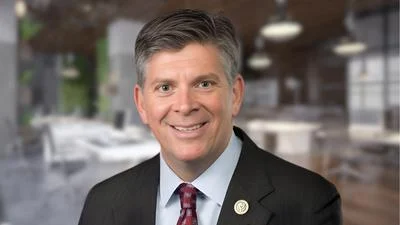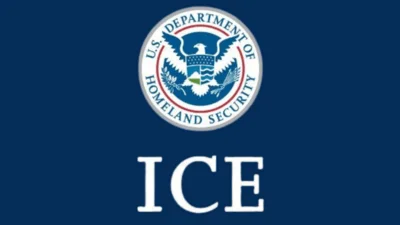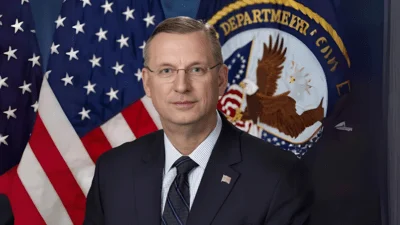Today, U.S. Deputy Secretary of Commerce Bruce Andrews delivered remarks at the fourth annual White House Economic Development Forum. This forum – hosted by SelectUSA, in conjunction with the International Economic Development Council and the National Economic Council – brought together more than 50 of the country’s leading economic development professionals to discuss America’s long-term economic competitiveness.
During his remarks, Deputy Secretary Andrews highlighted key investments the Department is making to promote U.S. economic growth. He also stressed the importance of a collaborative relationship between the federal government and communities around the country. He called on these communities to provide feedback to the Commerce Department on the kinds of resources they need to be successful and thrive in the global economy.
Remarks as Prepared for Delivery Thank you, Vinai, for your kind introduction and for your stellar leadership of SelectUSA. You and your team have done an outstanding job organizing both this event, and this year’s highly successful SelectUSA Investment Summit – which was nearly twice as large as our first summit and attracted business delegations from nearly 80 international markets. The International Economic Development Council and many of the members in the room today played a critical role in the success of that event. I want to thank all of you for your partnership in building strong communities and a vibrant economy.
All of us are here because we share a common goal: to foster a climate for economic growth and broad-based prosperity in America. We have made great strides towards this goal in recent years. After years of uncertainty, our economy stands on strong footing, outpacing the rest of the world. As representatives from economic development organizations, each of you have seen firsthand how our economy has been moving from recession to recovery to expansion. And you are playing a key role in this comeback – by helping create the conditions for businesses to grow, for workers to thrive, and for struggling communities to get back on their feet.
While we have made great progress, we know that our country still has a long way to go. Too many families and communities are still waiting to feel the benefits of our growing economy in their day-to-day lives. At the Department of Commerce, we work every day to create a more dynamic economy where prosperity is sustainable and broadly shared. To achieve this, we are making key investments in our competiveness; in our people; in our infrastructure; and in our capacity for innovation and entrepreneurship. Today, I want to discuss some of the ways that our Department is working to support these investments.
First, we are investing in our competiveness, so that American companies can operate on a level playing field in the global marketplace. As Deputy Secretary, I have had the great privilege to travel around the world to help American businesses. I have seen firsthand how exports helped create jobs and get us out of the recession. Today, more than 11.7 million people will go to work in jobs supported by goods exports – and these jobs pay up to 18 percent higher than jobs not related to exports. Overall, exports contributed more than one-third of our growth between 2009 and 2014.
To build a future of sustainable growth for our economy, we need to help more American companies reach the 96 percent of customers who live outside the United States. That’s why we need strong trade agreements – like the Trans-Pacific Partnership, or TPP – that make it easier for businesses to ship their goods and services across the globe, while upholding our values and expanding market access. And that’s why we are committed to bringing these agreements to life, working with our United States Export Assistance Centers and foreign commercial service officers to help U.S. companies begin exporting or expand sales. We also hope that we will soon secure reauthorization of the Export-Import Bank, which provides companies with the financing they need to go toe-to-toe with foreign rivals.
By creating new trade opportunities, we can do more than help American businesses grow – we can also bring even more international investments to our shores and create incentives for foreign firms to expand their existing investments. The United States is already the number one destination for investment, according to A.T. Kearney’s 2015 survey of global business leaders. New trade agreements will make our country an even more attractive place for foreign companies to invest. This means more jobs and more prosperity for American communities and families. Put simply: now is the time to strike tough, new trade deals that will turn our country’s economic comeback into sustainable growth for the future.
Second, we are investing in our people to ensure that we are utilizing all of the nation’s great talent. Everyone here understands that the economy is constantly evolving – driven by globalization, advances in technology, ease of transportation, rapid pace of innovation, and increasingly interconnected markets. We must prepare our workers for the changing economy by offering more options for skills training through apprenticeships, community colleges, universities and grad schools, workforce training, and technical education, both online and in the classroom. That’s why our Department has made job-driven skills training and workforce development a top priority for the first time.
Secretary Pritzker and I meet with business leaders all the time, and we constantly hear about their challenges accessing the talent they need to compete. Through our “Skills for Business” initiative, we are partnering across the federal government to ensure that our training programs meet the needs of industry and prepare workers for the jobs of the 21stcentury. At the same time, federal training investments amount to a tiny fraction of the $450 billion dollars that private companies invest in training their workforce each year in the United States – which is why we must partner with educational institutions, businesses, economic development organizations, and local and foreign governments to improve our workforce efforts.
For example, we recently launched the “Communities that Work Partnership” with the Aspen Institute to break down silos by looking at the experiences of seven communities where cross-sector collaboration is already happening. In addition to providing technical assistance to each partnership and convening the selected communities to learn from one another, this initiative will look at how they implemented their best practices, so that these methods can be applied and shared across our country. We hope to find more ways in the future for collaboration to meet our economy’s workforce needs.
Third, we are investing in infrastructure, so that our products and ideas move at the speed required in the 21st century. Our infrastructure – whether we’re talking about highways, bridges, and airports, or reliable access to the internet – is the backbone of our economy. It enables our people to access opportunity, to connect with one another, and to move their goods and services. Yet, despite how important infrastructure is to our country’s global competiveness, we continue to under-invest in this foundation of our economic success. As a result, year after year, our infrastructure falls into further disrepair.
Consider this: Congress is currently considering another short-term extension of the highway trust fund – for the 34th time since 2009. How can communities plan for the future when they don’t know how their roads will be funded three months from now, let alone three years from now? We need stable, predictable funding for our infrastructure, so that governors and mayors can make the investments needed to build stronger communities.
At the same time, we know that our students, businesses, and families need a reliable digital infrastructure to keep up with unprecedented increases in innovation around the world. The digital economy is booming, creating new jobs and opportunities we couldn’t have imagined even a decade ago. To support this growing segment of the global economy, through our National Telecommunications and Information Administration, we have expanded internet access to underserved rural and urban areas by helping fund more than 113,000 miles of new or upgraded broadband. But more than one in five U.S. homes still has no access to high-speed internet, which places families, children, and communities at a disadvantage. At a time when technological innovation and economic growth go hand-in-hand, this is unacceptable. We must work together to build a strong, innovative foundation that moves at the speed of the 21st century.
This brings us to our Department’s investments in innovation and entrepreneurship. While most people think of places like Silicon Valley and New York as hubs of innovation, the reality is that great ideas exist in every corner of our country. We want to make it easier and more efficient for any American – wherever they are – to build and grow their own company. And we believe that the federal government has the responsibility to help make sure entrepreneurs and innovators have what they need to turn a great idea into a great business. That’s why the Department of Commerce is putting more tools in the hands of entrepreneurs and American businesses than ever before. We are constantly modifying our set of tools to adapt to the speed of business, and providing resources at each step of the business lifecycle.
One of the ways we do this is through our new Startup Global program, which encourages early-stage companies to consider exporting their products. Experts from across our Department provide the technical assistance and know-how needed by companies to export their goods and services. From the minute a groundbreaking idea gets sketched on the back of cocktail napkin, to when a company goes public, our Department is there to help that business succeed – because we know that innovation and discovery have driven economic growth in the United States since its founding.
As we continue to make investments in these key areas – in our competiveness, our people, our infrastructure, and our innovative ideas – we need to hear from you. Your organizations are working hard every day to build resilient regional economies – and we need you to keep us updated on what your communities need to thrive in a changing global marketplace. Working together with all of you, I am confident we can spur investment and development in our communities, expand the national and global footprint of our businesses, and cultivate opportunity and prosperity for our families and workers. Thank you.
Source: U.S. Department of Commerce








